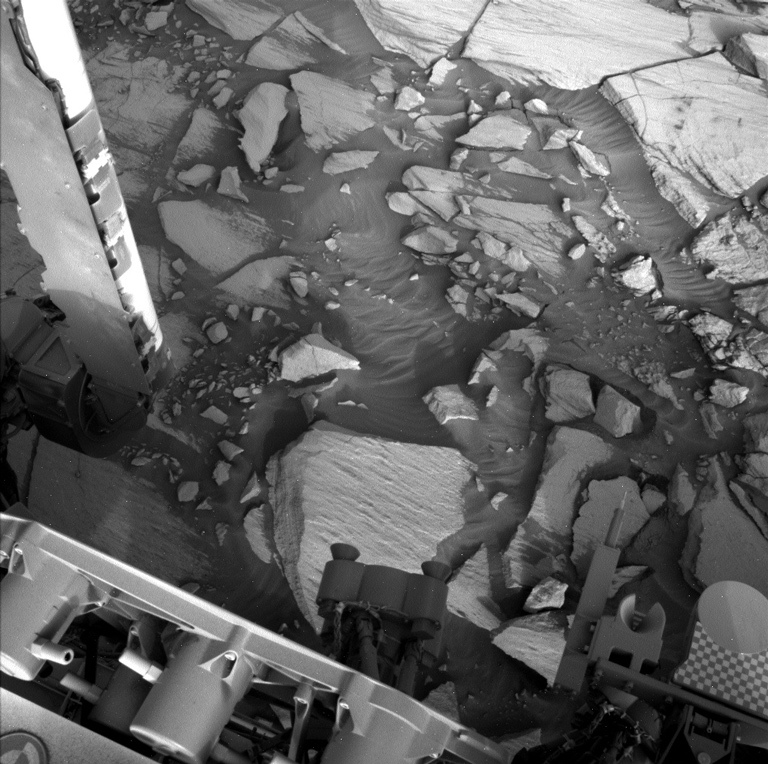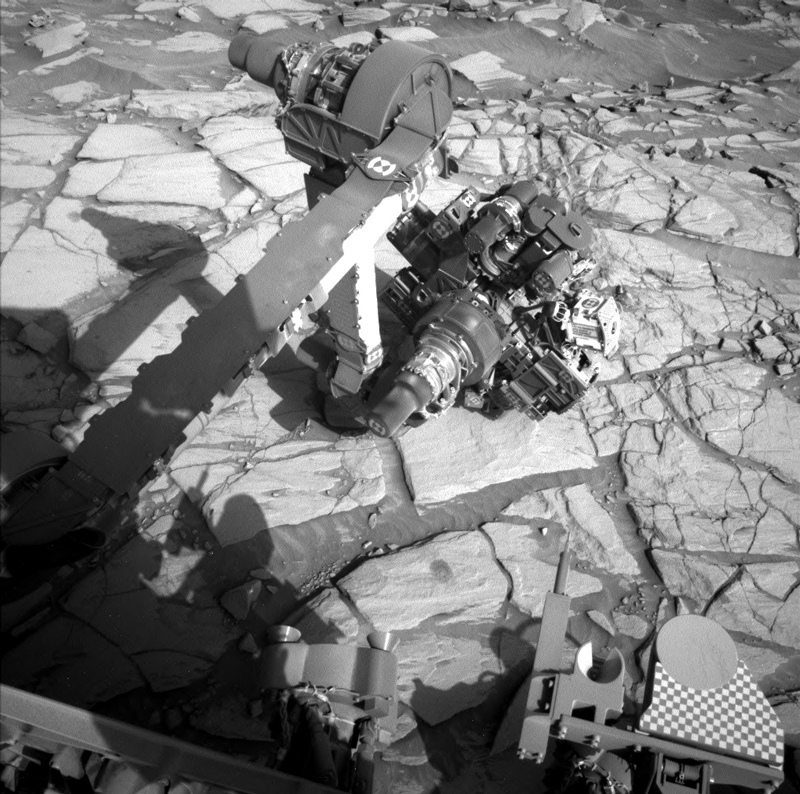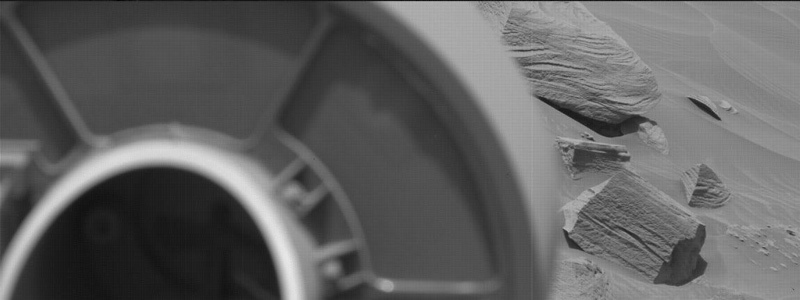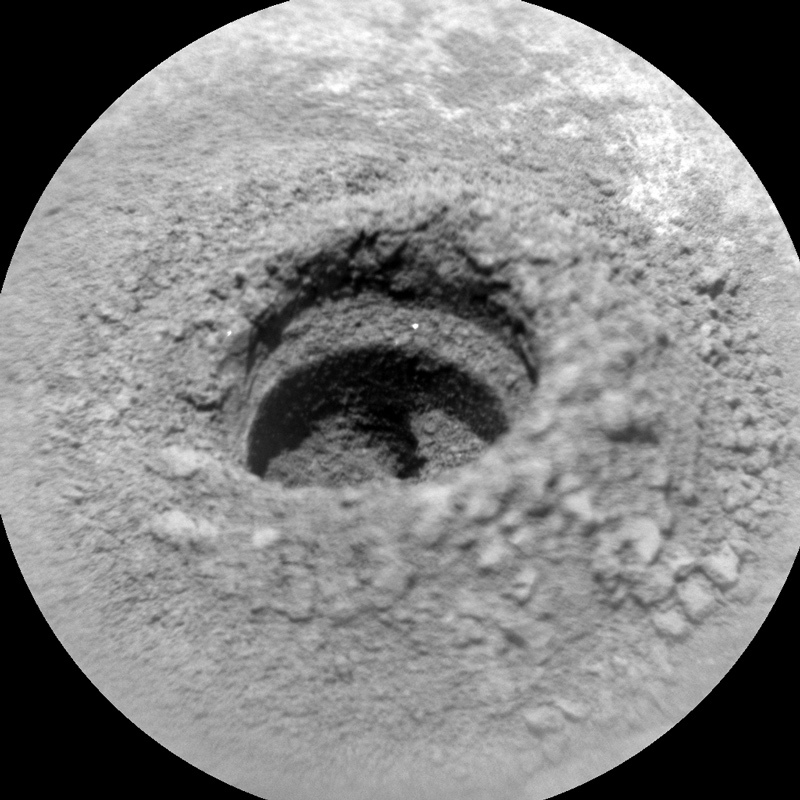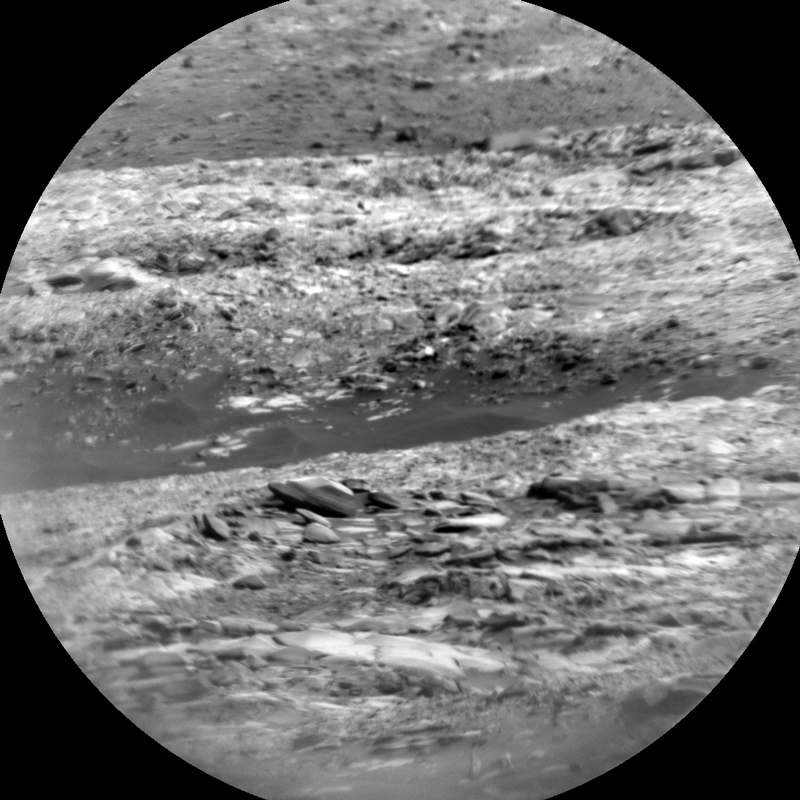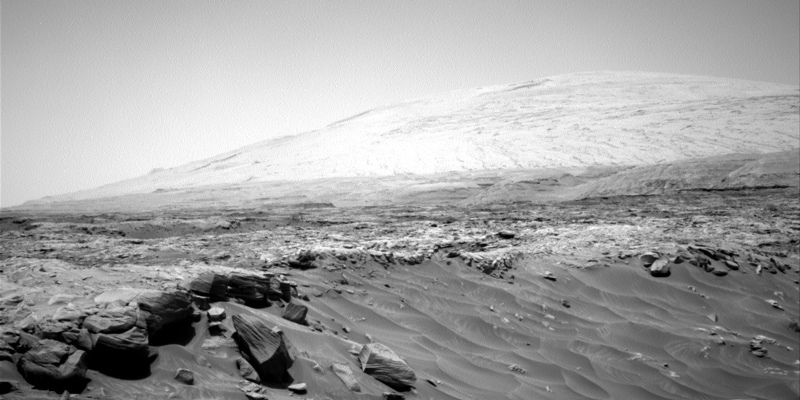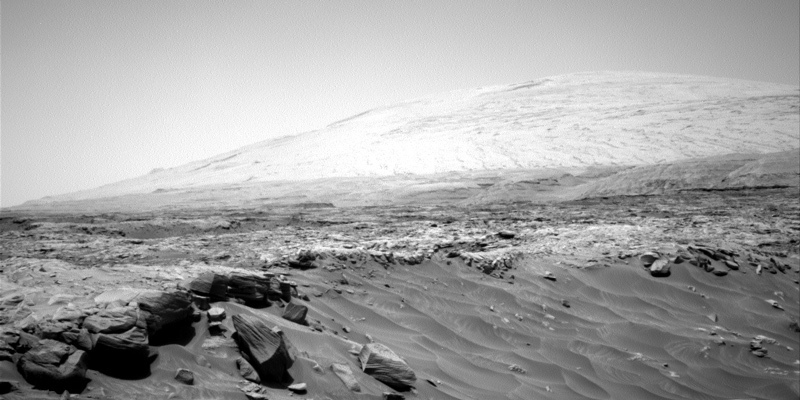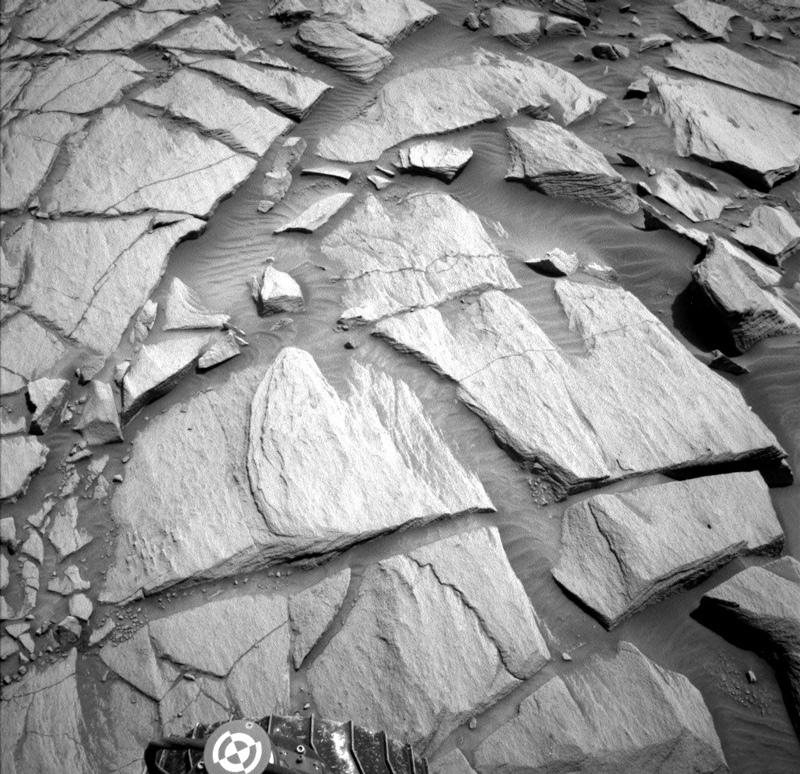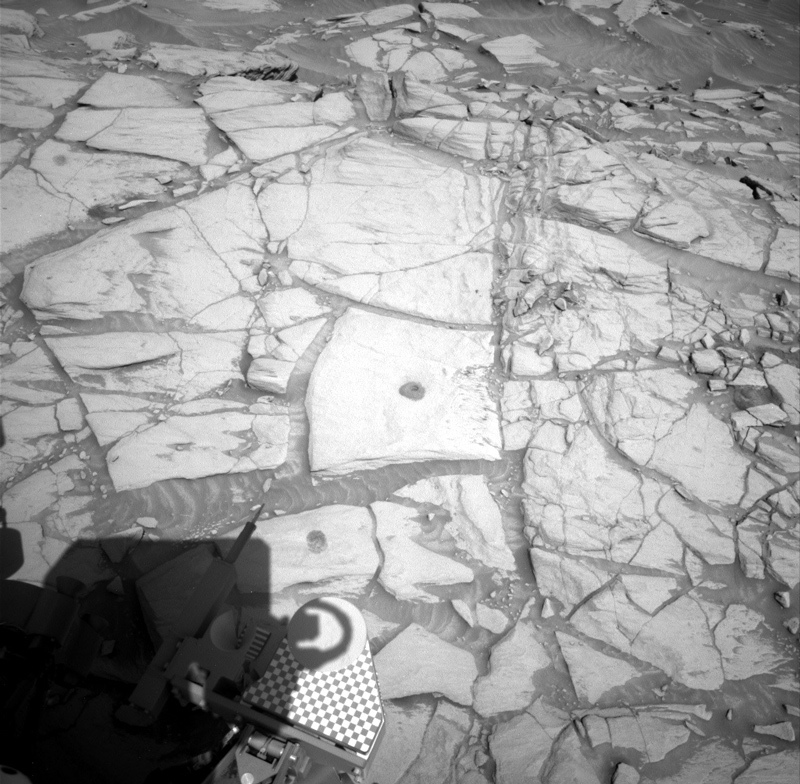April 13, 2020
Sol 2733: Nodules Nodules Everywhere, but Few Within Arm's Reach!
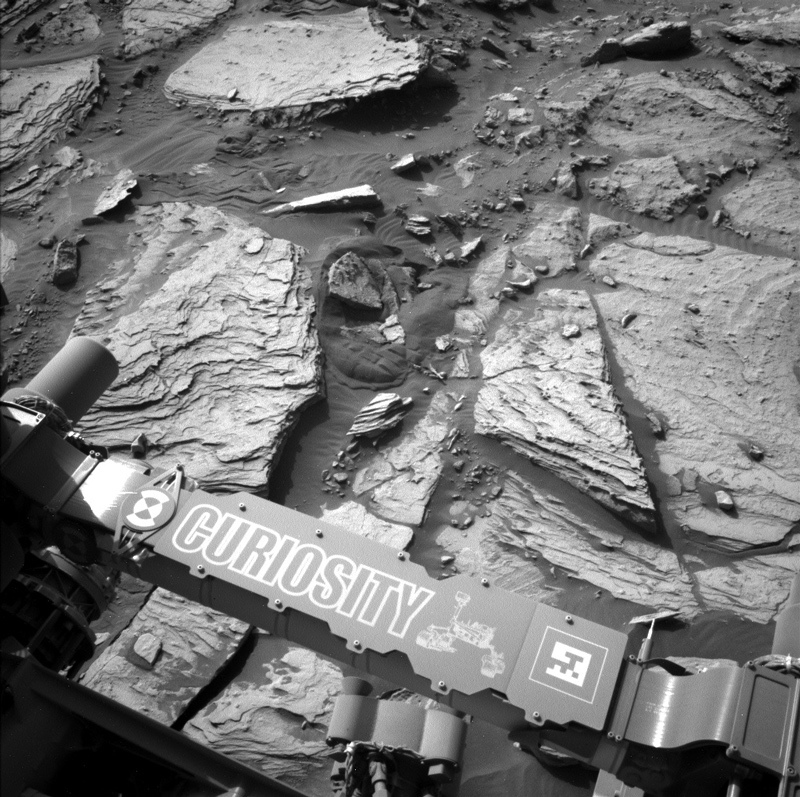
This image was taken by Left Navigation Camera onboard NASA's Mars rover Curiosity on Sol 2732. Credits: NASA/JPL-Caltech. Download image ›
In our last bit of science from on top of the flat topographically raised region known as the “Pediment,” we wanted to chemically characterize some small nodular bedrock targets that we’ve been noticing across the landscape. The original plan was for a “touch-and-go,” which would mean a quick APXS integration over a target of interest before driving away to our next location. However, while today’s workspace contained plenty of great nodular targets, most were just outside of the reach of the rover’s arm! In addition, the timing of the short APXS integration was not ideal to collect clean data. So, instead, the “quaran-team” selected a small nodule that was within the arm’s reach, and planned overnight integrations on three nearby locations that will allow us to separate the composition of the nodule from the bedrock. We will then plan to drive away in tomorrow’s plan as opposed to doing so today. To accompany this APXS integration, we’ve also identified both nodular and “typical” bedrock targets to characterize using the ChemCam instrument, which will provide additional chemical analyses of the surface of the Pediment before dropping back into the Clay-Bearing Unit.

